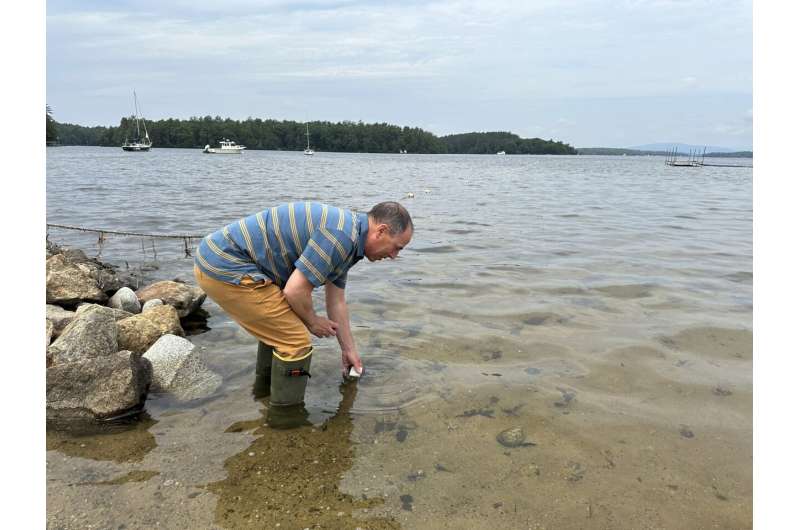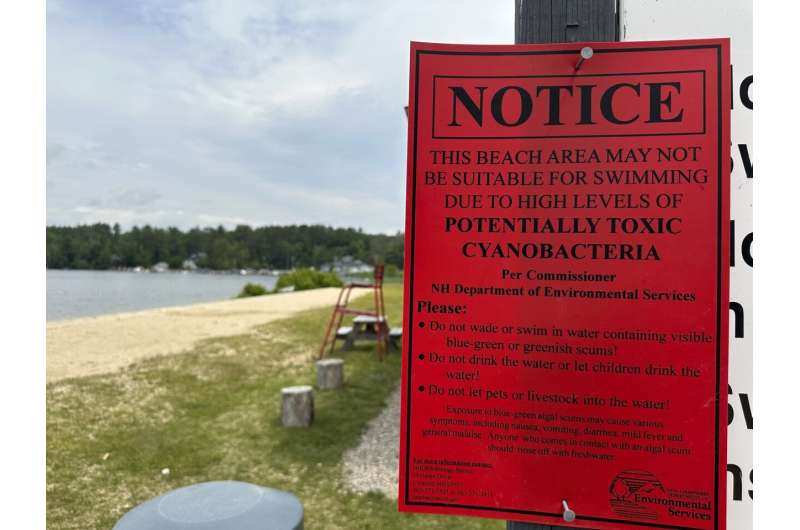This article has been reviewed according to Science X's editorial process and policies. Editors have highlighted the following attributes while ensuring the content's credibility:
fact-checked
reputable news agency
proofread
'Tis the season for swimming and bacteria alerts in lakes, rivers

With summer about to start, many people flocking to their favorite swimming holes may also want to read up on bacteria warnings.
During the busy Memorial Day weekend and shortly afterward, at least 20 people, most of them children, reported E. coli infections after they swam in Lake Anna, a popular recreational destination in central Virginia. Nine of those people were hospitalized. An additional 10 cases are under investigation.
In Massachusetts, 22 beaches were closed across the state as of Friday morning. "Bacteria exceedance" accounted for more than half of the shutdowns. On the West Coast, high bacteria levels shut down three beaches in Seattle.
Here's what to know about the most common concerns.
E. coli bacteria
E.coli bacteria normally live in the intestines of healthy people and animals. Most strains are harmless, cause relatively brief diarrhea, and most people recover without much incident, according to the Mayo Clinic. But small doses of some strains—including just a mouthful of contaminated water—can cause a range of conditions, including urinary tract infection, cystitis, intestinal infection and vomiting, with the worst cases leading to life-threatening blood poisoning.
Cyanobacteria
Cyanobacteria—also referred to as blue-green algae—are plant-like organisms that live in water. They can quickly grow out of control, or "bloom," and some produce toxins that make people and animals sick, according to the U.S. Centers for Disease Control and Prevention. They can look like foam, scum, mats, or paint on the surface of the water. They can also grow underneath the water.
"The things that are causing blooms are the excessive nutrients that are flowing into our surface waters through storm water, fertilizers, pet waste, septic systems. That, coupled with the increased sunlight and heat, is just the perfect recipe for cyanobacteria," said David Neils, the chief aquatic biologist with the New Hampshire Department of Environmental Services.
He was checking out the blooms in Tuftonboro, along Lake Winnipesaukee, the state's largest lake. State officials warned people not to swim there and in Wolfeboro because of cyanobacteria readings.
Neils said this year, the lake had very little ice cover and never really froze over.
"Warmer water temperatures due to lack of ice cover certainly promotes blooms," he said.
Symptoms of cyanobacteria exposure can include skin irritation, stomach cramps, vomiting, nausea, diarrhea, fever, sore throat, headache, muscle and joint pain, mouth blisters, seizures, and acute liver damage.

Brain-eating amoeba
Brain-eating amoeba, also known as Naegleria fowleri, is a single-celled organism that lives in soil and warm fresh water, such as lakes, rivers and hot springs, according to the U.S. Centers for Disease Control and Prevention. It can cause a brain infection when water containing the amoeba goes up the nose. Only about three people in the United States get infected each year, but these infections are usually fatal.
Last year, an Arkansas resident died after being infected. State health officials concluded that the person was likely exposed to it at a country club's splash pad.
Naegleria fowleri infects people when water containing the amoeba enters the body through the nose, according to the CDC
Taking precautions
If you're going out for a swim, shower before and afterward and try not swallow the water, the National Institutes of Health advises. Wash your hands before you eat or drink after playing in recreational waters or in the sand.
People also shouldn't go to the bathroom in the water and should stay out if they've had diarrhea recently to protect others, the organization says.
They should also check out the water itself.
"The message to swimmers is that they should really do what we call a self-risk assessment and look at the water and see if they consider it safe for swimming," Neils said.
Check for warning signs, talk to lifeguards, and do your homework by checking on specific beaches through state and local alert systems.
© 2024 The Associated Press. All rights reserved. This material may not be published, broadcast, rewritten or redistributed without permission.




















